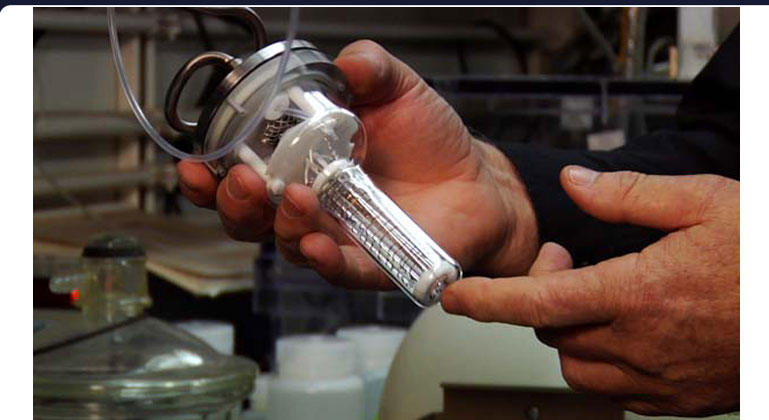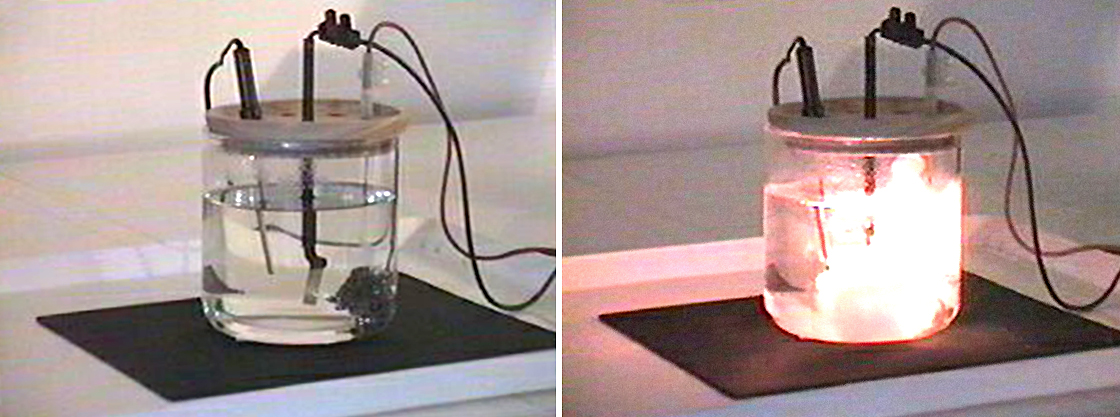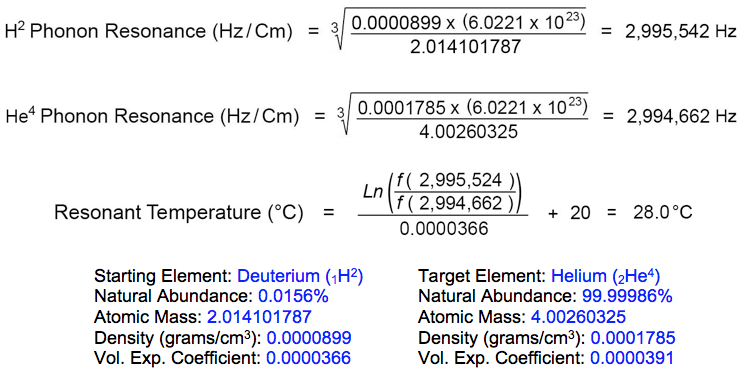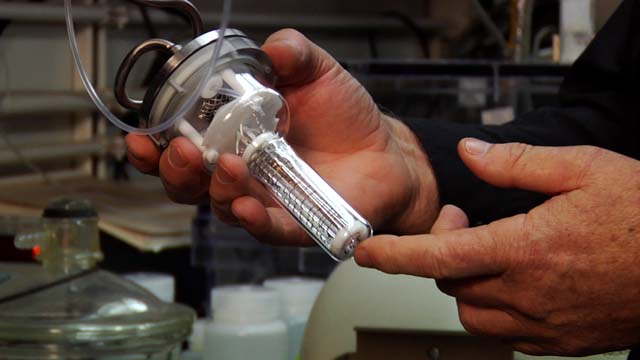




Resonant Atomic Transmutations of Deuterium
The 'Cold Fusion' Reactor: Deuterium to Helium Transmutation
by Alex Putney for Human-Resonance.org
August 23, 2014
Since ancient times, blacksmiths and metallurgists in all parts of the world have been processing various alloys using high-heat furnaces combined with quenching processes that rapidly cool the metals to avoid undesirable phase changes that occur during gradual cooling. Transmutation reactions also involve these two distinct stages.
The first stage of transmutation reactions set the 'atomic memory' by maintaining the starting element at the phonon resonance frequency of the target element, during a 3-hr dwell time under gas pressure or vacuum.
The second stage of transmutation reactions involves subsequent fusion trapping or fission release of gas atoms within the metal lattice by the induced shock of rapid cooling. Instead of rapidly contracting, metal atoms maintain the established resonant diameter by accepting or ejecting the electrons, protons and neutrons of interstitial gas atoms, in many cases releasing soft multi-photon radiation during nuclear conversion into the target element.
The synthesis of these concepts has been accomplished by the careful study of atmospherical, geological and biological transmutation processes that occur within very specific resonant temperature ranges and involving the pressure of specific gases that provide for the abundance of all life. A concise history of scientific investigations of a great variety of atmospherical, geological and biological transmutations reveals the essential natural process of resonant atomic conversion that can now be replicated as precisely tuned electrochemical reactions in vitro:


The resonant atomic transmutation of deuterium into helium is achieved by precision control of atomic resonance in a two-stage reaction that is safe, non-toxic and involves high energies. Deuterium is instilled with the resonant atomic frequency signature of helium, before being rapidly cooled to trigger pair fusion inducing bulk conversion into helium --according to the established frequency 'memory' of the standing wave field of each atom.

The first stage of the transmutation reaction heats the starting isotope (deuterium) to the phonon resonance frequency of the target isotope (helium) during low-voltage electrical currents within palladium wires (above).
The most abundant isotope of helium (He4) provides the resonant target frequency, as determined by the following formulae (calculated using the latest atomic data sets, provided in blue):

The resonant frequency of helium isotope (He4) at rest state is 2,994,662 Hz, according to the element's atomic diameter at 20°C. Deuterium heavy isotope (H2) resonates at this same frequency when heated to 28.0°C:


Deuterium to Helium
The low energy nuclear fusion of pairs of deuterium (heavy hydrogen) atoms in the formation of helium was observed during electrolysis employing deuterium-saturated palladium electrodes (Fleischmann & Pons, 1989), replicated by various researchers (Storm, 1992) showing enhancement by electron polarization (Feng, 2002).
* Deuterium is heated to 28.0°C within palladium, inducing pair fusion to form helium during rapid cooling:

The ongoing controversy surrounding the Fleischmann & Pons experimental 'Cold Fusion' reactor only sustained itself in the face of easily replicable data that confirmed its validity beyond a shadow of a doubt, and now finally becoming inescapable for the critics of their quite simple nuclear reaction process. Under low voltage conditions palladium wires in deuterium-enriched waters produced fusion events that resulted in the formation of helium in quantities that could be measured as significant during the course of prolonged reactions. The same failing coverup attempts have attacked the Ecat Reactor of A. Rossi that converts nickel into radioactive copper under hydrogen gas pressure.
Resonant atomic fusion of electrically dissociated deuterium atoms to form helium atoms during the rapid cooling phase of the resonant reaction that proceeds according to the following basic nuclear recombination formula:

Continue with The Lightwater Reactor
Return to the article The Geyser Reactor
From the book Phonon Resonance Dataset
Copyright 2013-2015 Alexander Putney